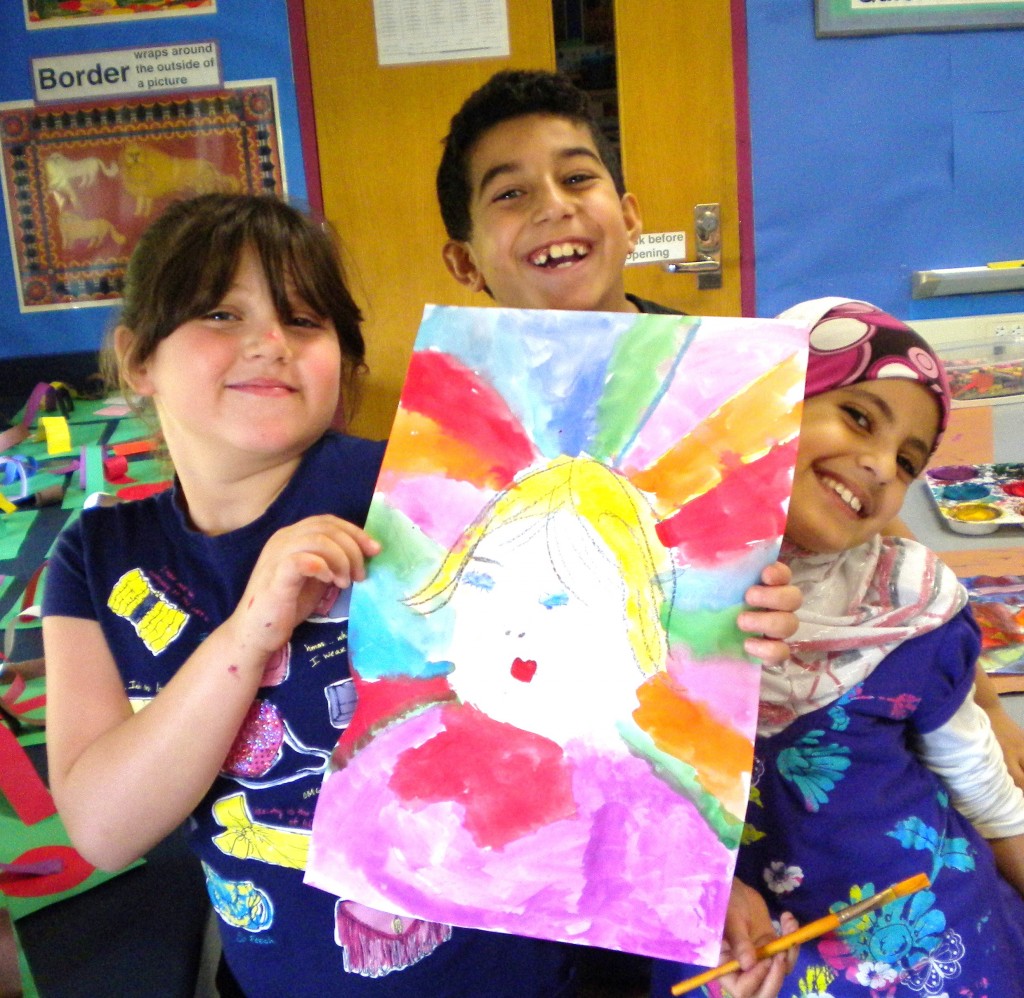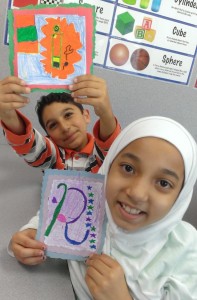
Parents play a vital role in the success of their children. Here’s what you should know:
- An arts-infused education helps our children develop the critical thinking, collaborative, and creative skills necessary to succeed in the 21st century
- Art class is important because students learn and develop skills in ways different from other subjects in school
- In most learning, students are taught that there is one correct answer to a question or problem. Art class helps students understand that challenges can have multiple, different solutions
- Art help students understand the way they think about, interact with, and care about the world
- Art enables people to explore and express themselves in ways words cannot
- Art is important because it helps children understand that they are creative people who can add beauty and meaning to the world
- Art class is important, especially to children, because we are consumers of a visually saturated world. Art informs children about how and why they are psychologically affected by visual stimuli, and how to use that information to make better choices
- Art offers hands-on and project-based learning experiences in ways that their regular classroom cannot
Here are ten ways you can help:
-
Participate
Ask your children about their art projects. Sing, play music, read, dance, or draw with your child at home. .
-
Support your children’s art
Encourage your child to participate in creative outlets and celebrate their participation in arts activities both in their school and the community. Take your child to an art museum and visit the annual Multi-Arts Night at the Ford Community & Performing Art Center.
-
Go Read
Visit your local library and read books about artists and art history.
-
Speak Up
Attend a school board or PTA meeting and voice your support for adequately funded arts education programs as part of the school’s budget. Brush up on the facts about arts education beforehand.
-
Take The Lead
Tell your child’s teacher or principal about how vital the arts are to quality education. Ask them what they need and how you can help!
-
Think Local
Read your local newspaper or community website to find out about local cultural events for you and your child to enjoy. Voice your opinion in a letter to the editor of a newspaper about why arts education is crucial.
-
Give & Volunteer
Donate time, supplies, or other resources to your child’s school or a local arts organization’s education programs. Tape and paper cups! The art room can always use more tape and paper cups!
-
Join The Cause
Join our Cause campaign called “Keep the Arts in Public Schools.” It’s free!
-
Be An Advocate
Show your support for arts education by speaking with education leaders and decision makers. For ways to take action, visit Americans for the Arts’ website.
-
Stay Informed
Keep up to date on the latest arts education news by subscribing to the RSS Feed on ARTSblog. Talk to your child’s art teacher and ask them what is happening in the art room.
10 Lessons the Arts Teach
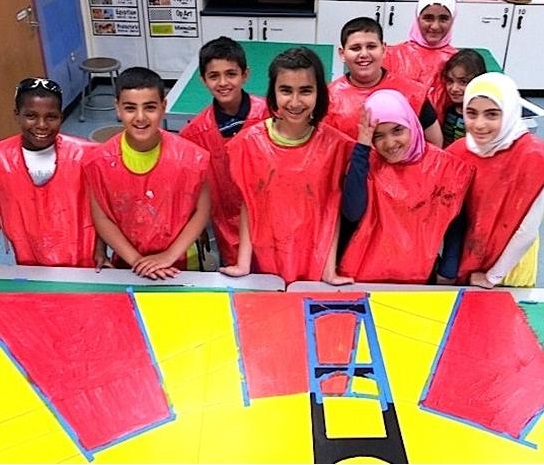 1. The arts teach children to make good judgments about qualitative relationships.
1. The arts teach children to make good judgments about qualitative relationships.
Unlike much of the curriculum in which correct answers and rules prevail, in the arts, it
is judgment rather than rules that prevail.
2. The arts teach children that problems can have more than one solution
and that questions can have more than one answer.
3. The arts celebrate multiple perspectives.
One of their large lessons is that there are many ways to see and interpret the world.
4. The arts teach children that in complex forms of problem solving purposes are seldom fixed, but change with circumstance and opportunity.
Learning in the arts requires the ability and a willingness to surrender to the unanticipated possibilities of the work as it unfolds.
5. The arts make vivid the fact that neither words in their literal form nor numbers exhaust what we can know. The limits of our language do not define the limits of our cognition.
6. The arts teach students that small differences can have large effects.
The arts traffic in subtleties.
7. The arts teach students to think through and within a material.
All art forms employ some means through which images become real.
8. The arts help children learn to say what cannot be said.
When children are invited to disclose what a work of art helps them feel, they must reach into their poetic capacities to find the words that will do the job.
9. The arts enable us to have experience we can have from no other source
and through such experience to discover the range and variety of what we are capable of feeling.
10. The arts’ position in the school curriculum symbolizes to the young
what adults believe is important.
SOURCE: Eisner, E. (2002). The Arts and the Creation of Mind, In Chapter 4, What the Arts Teach and How It Shows. (pp. 70-92). Yale University Press. Available from NAEA Publications. NAEA grants reprint permission for this excerpt from Ten Lessons with proper acknowledgment of its source and NAEA.
Visual Thinking Strategies
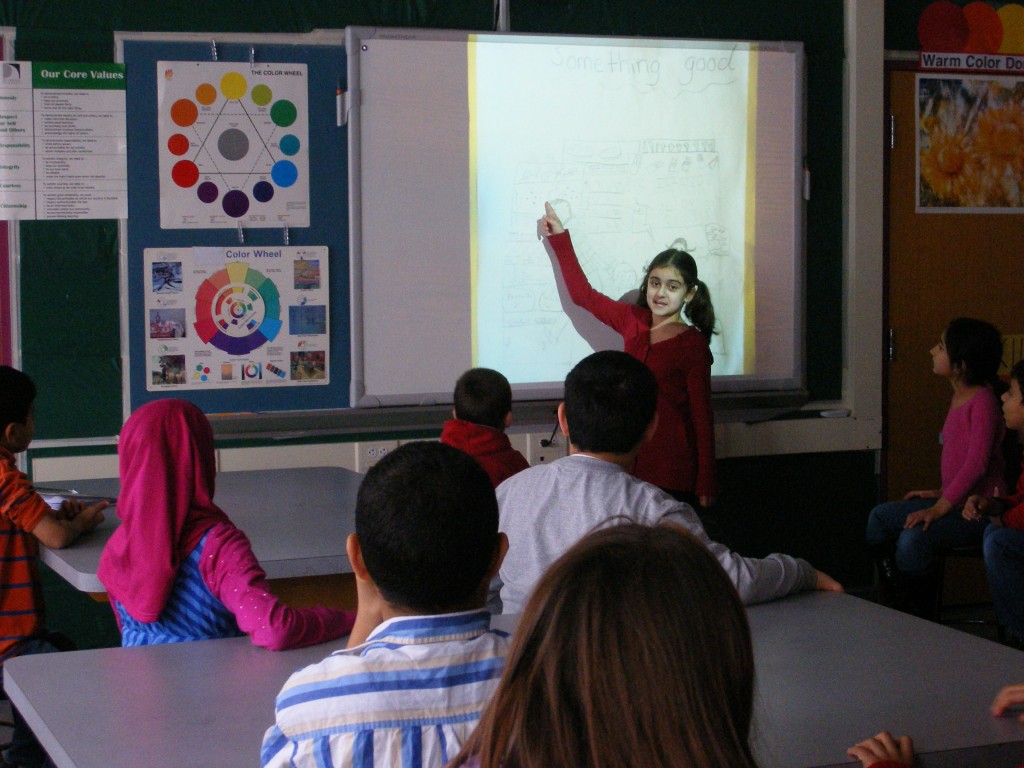
Dearborn Public Schools utilizes Visual Thinking Strategies (VTS) in its art curriculum
VTS is a technique that gives viewers an opportunity to explore and discuss a wide range of art. VTS emphasizes observation and thinking about the multiple meanings contained in art, building on the capacities of art to captivate, intrigue and stimulate thought.
It teaches the necessary foundation skills — careful examination and reflection — upon which other aspects of visual literacy can then build for a lifetime of looking. It is a student-centered curriculum designed for teachers regardless of their background in art.
VTS develops several skills that have appeared in research to date and which transfer to other arenas of cognition and social interaction.
- It leads to habits of using extended observation to increase and enrich understands.
- It builds students’ capacity to develop hypotheses (considering images’ meanings) and to support their points of view (citing what they see that makes them think as they do).
- It encourages openness, flexibility, and the ability to speculate among plausibilities, as well as to revise or change an opinion based on new evidence or deeper reflection.
- It develops communication skills as students’ language becomes more descriptive as they articulate their opinions and exchange views with their classmates.
- It develops the capacity for collaboration as ideas are explored freely in a group — in effect solving complex problems cooperatively.
Watch this video to see VTS in action
![]()
Why Arts Education Is Crucial, and Who’s Doing It Best – Edutopia
![]()
Why Art Education?

From the Davis Publications Art Education Advocacy Guide, 2009-2010
What does art education do for the individual and for society? Why do we teach art? How does art contribute to education at all levels?
There are many good answers to these questions, but three stand out as crucial in today’s social and economic climate. We believe that art-and therefore art education-means three things that everyone wants and needs.
Art Means Literacy
Art is a language of visual images that everyone must learn to read. In art classes, we make visual images, and we study images. Increasingly, these images affect our needs, our daily behavior, our hopes, our opinions, and our ultimate ideals.
That is why the individual who cannot understand or read images is not completely educated. Complete literacy includes the ability to understand, respond to, and dtalk about visual images. Therefore, to carry out its total mission, art education stimulates language-spoken and written-about visual images.
As art teachers, we work continuously on the development of critical skills. By teaching pupils to describe, analyze, and interpret vis states it wual images, we enhance their powers of verbal expression. That is no education frill.
Art Means Work
Beyond the qualities of creativity, self-expression, and communication, art is a type of work. This is what art has been from the beginning. This is what art is from childhood to old age. Through art, our students learn the meaning of joy of work-work done to the best of one’s ability, for its own sake, for the satisfaction of a job well done.
There is a desperate need in our society for a revival of the idea of good work, work for personal fulfillment, work for social recognition, work for economic development. Work is one of the noblest expressions of the human spirit, and art is the visible evidence of work carried to the highest possible level.
Today we hear much about productivity and workmanship. Both of these ideals are strengthened each time we commit ourselves to the endeavor of art. We art dedicated to the idea that art is the best way for every young person to learn the value of work.
Art Means Value
You cannot touch art without touching values: values about home and family, work and play, the individual and society, nature and the environment, war and peace, beauty and ugliness, violence and love.
The great art of the past and the present deals with these durable human concerns. As art teachers, we do not indoctrinate. But when we study the art of many lands and peoples, we expose our students to the expression of a wide range of human values and concerns. We sensitize students to the fact that values shape all human efforts, and that visual images can affect their personal value choices.
All of them should be given the opportunity to see how art can experss the highest aspirations of the human spirit. From that foundation we believe that they will be in a better position to choose what is right and good.
![]()
Art is the cleverness of Odysseus; the intimate knowledge of materials in a sculpture by Renaissance master Benvenuto Cellini or a dress designed by Issey Miyake; the inventive genius of a Leonardo da Vinci, Thomas Edison, or computer visionary Douglas Engelbart; the verbal craft in everything from an aphorism (“Time is money”) to an oration (“Four score and seven years ago, our fathers brought forth on this continent a new nation”) to a commercial slogan (“Just Do It”). In short, art isn’t to be found only in galleries and museums; it is woven into the warp and woof of an entire civilization.
Art in Schools Inspires Tomorrow’s Creative Thinkers – Edutopia
![]()
This next article illustrates how art binds and reinforces a student’s education.
Art and Other Subjects
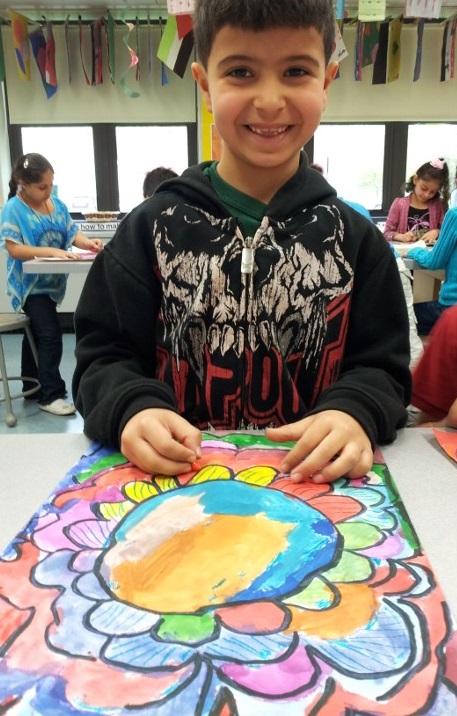
By John Goldonowicz – Originally published in Art Education, November, 1985, Vol.38, No. 6, p. 17
Like ARABIC or SPANISH, ART is a language that can be learned and understood. It is a form of communication that one can learn to read and speak through study and practice. Reading art means understanding a visual statement. Speaking art means creating a visual statement. When art seems strange or meaningless, it is only that this language is yet to be understood.
Like ENGLISH, ART has an established vocabulary and grammar (the elements and principles of design). These fundamentals of composition are the basis for appreciating and producing works of art. All creativity must be channeled through these rules of construction in order to make a clear statement. To comprehend how art is put together is to be visually literate.
Like SCIENCE, ART is based on a natural order and relationship of elements. These elements, such as line and color, have unique properties and can be explored in lab-like projects and exercises that reveal individual characteristics, as well as how these qualities can be manipulated and how these elements can work together. Through experimentation, one can discover the nature and potential of art.
Like MATHEMATICS, ART possesses certain principles that are logical, time-proven, and constant guidelines to pictorial organization. An effective composition requires thought, planning, and order. All parts must be considered toward the whole. Concepts such as linear perspective and color theory are specific examples of how art is as analytical as it is emotional.
Like PHYSICAL EDUCATION, ART can require a sort of visual toning—exercising one’s eyes earnestly and regularly. With conscientious practice, one’s abilities can be recognized, developed, and mastered. Through perseverance, a faithful routine can lead to significant accomplishment. A lazy or sporadic approach limits potential. Gradual progress prevails over instant achievement.
Like SOCIAL STUDIES, ART promotes an awareness and understanding of people and cultures. Art reflects the ideas and ideals of societies, governments, and religions. Art has been influenced by geography, war, and commerce. Art can help us understand past civilizations and define our identity for future generations. Art is a visual record of people and their world.
Like MUSIC, ART is based on the refinement of one of our senses. As music relates to how one listens and hears, art focuses on looking and seeing—on visual sensitivity. In both areas, the perception of subtlety is essential to grasping variation and innovation. In music and art, the greatest accomplishments are those in which subtlety and sensitivity are balanced with skill and creativity.
Like SPIRITUALITY, ART can be a vehicle through which to tap one’s soul. Art can be a mirror of one’s beliefs, one’s feelings, one’s identity, one’s relationship to others. Art can express our secular and spiritual quality, our orientation toward life. In exploring and exposing aspects of people’s souls, art can communicate that which is universal and that for which there are no words.

